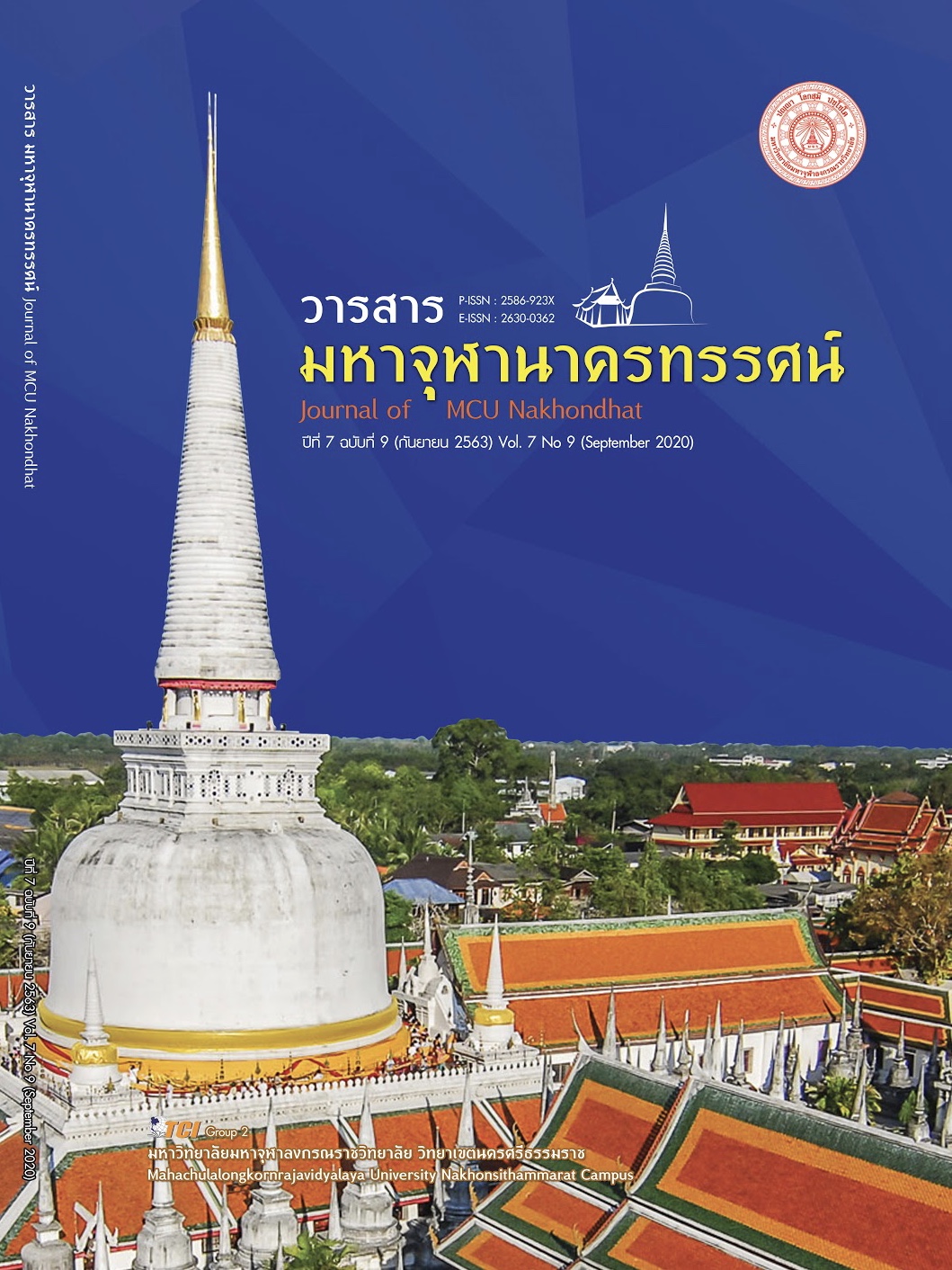APPLYING THE SATIR MODEL TO PRACTICE IN MENTAL HEALTH CARE OF NURSING STUDENTS
Main Article Content
Abstract
Satir model is a psychological approach to help both the therapist and the patient develop themselves and understand the truth of being a human. Satir model main concept is based on the belief that the mental problems of various people are caused by not understanding the nature of one’s own and incorrect learning in the past. Therefore Satir model focuses on helping people to learn about their potential and develop themselves to their full potential, with three Therapeutic beliefs consists of belief about human, adaptation, and change. Group therapy will integrates the Satir model concept into the group process. The group process helps to create relationships among members within the group. This will make curative factors occur much faster than individual therapies. The process of group therapy has 3 stages, namely the initiating phase, working phase, and terminal phase. Starting with initiating phase the group will proceed after the therapist has prepared in all aspects. Especially the preparation of oneself to be congruence. Main point is to creation of relationships and service agreements. In working phase, nursing students will explore the problem, impact on oneself, creating goal, creating determination and changes. When students become aware of changes in themselves, the group will advance to the final phase. The terminal phase focus on the change and giving homework. Satir model works within the mind of individual. It use group process as a medium for students to analyze and develop themselves. Students will be able to use skills that acquired while doing a group to continue developing themselves and form a coping stance with congruence permanently.
Article Details
References
ทีมงานความสุขประเทศไทย. (2560). ซาเทียร์: ขุมพลังอันยิ่งใหญ่ในตัวเรา. เรียกใช้เมื่อ 23 มีนาคม 2563 จาก http://www.happinessisthailland.com
นงพงา ลิ้มสุวรรณ และคณะ. (2550). Satir Model. วารสารสมาคมจิตแพทย์ประเทศไทย, 52(1), 1-6.
นงพงา ลิ้มสุวรรณและนิดา ลิ้มสุวรรณ. (2561). ซาเทียร์ จิตบำบัดและการพัฒนาตนเอง. (พิมพ์ครั้งที่4). กรุงเทพมหานคร: โรงพิมพ์แห่งจุฬาลงกรณ์มหาวิทยาลัย.
นันท์ชัตสัณห์ สกุลพงศ์ และคณะ. (2558). ผลของการปรึกษาทางจิตวิทยาแบบกลุ่มบรูณาการเน้นแนวคิดซาเทียร์ ต่อพลังสุขภาพจิตของผู้ติดแอมเฟตามีนหญิงที่อยู่ในระยะฟื้นฟูสมรรถภาพ: การวิจัยแบบผสานวิธี. วารสารสวนปรุง, 31(3), 16-31.
วารีรัตน์ ถาน้อยและคณะ. (2555). ปัจจัยที่มีอิทธิพลต่อภาวะสุขภาพจิตของนักศึกษา คณะพยาบาลศาสตร์ มหาวิทยาลัยมหิดล. วารสารสภาการพยาบาล, 27(ฉบับพิเศษ), 60-76.
สดใส คุ้มทรัพย์อนันต์. (2561). กลุ่มครอบครัวบำบัดแนวแซทเทียร์. (พิมพ์ครั้งที่1). กรุงเทพมหานคร: สำนักพิมพ์มหาวิทยาลัยธรรมศาสตร์.
สรรกมล กรนุ่ม และพรทิพย์ วชิรดิลก. (2559). การเปลี่ยนแปลงของครอบครัวที่รับบริการครอบครัวบำบัดตามแนวคิดแซทเทียร์: กรณีบุตรวัยรุ่นมีพฤติกรรมต่อต้าน. วารสารพฤติกรรมศาสตร์, 2(1), 109-121.
สีนวล รัตนวิจิตร และมาลินี จำเนียร. (2560). ผลของการประยุกต์ใช้satir model ต่อความมั่นใจในการหลีกเลี่ยงการมีเพศสัมพันธ์ก่อนวัยอันควรในนักเรียนหญิงระดับมัธยมศึกษาชั้นปีที่ 1 ใน เขตชุมชนเมืองจังหวัดนครปฐม. วารสารเกื้อการุณย์, 24(1),102-117.
สุปราณี หมื่นยา และคณะ. (2557). ปัจจัยที่เกี่ยวข้องกับการปฏิบัติทักษะทางการพยาบาลตามการรับรู้ของนักศึกษาพยาบาลที่ฝึกภาคปฏิบัติวิชาปฏิบัติหลักการและเทคนิคการพยาบาลวิทยาลัยพยาบาลบรมราชชนนี อุตรดิตถ์. วารสารการพยาบาลและสุขภาพ, 8(3) (ฉบับพิเศษ), 200-211.
อรนลิน สิงขรณ์ และคณะ. (2559). ผลของโปรแกรมกลุ่มสุขภาพจิตศึกษาโดยใช้ ซาเทียร์ โมเดล เป็นฐานต่ออาการซึมเศร้าในผู้หญิงไทย โรคซึมเศร้า. วารสารการพยาบาลจิตเวชและสุขภาพจิต, 30(3), 21-35.


